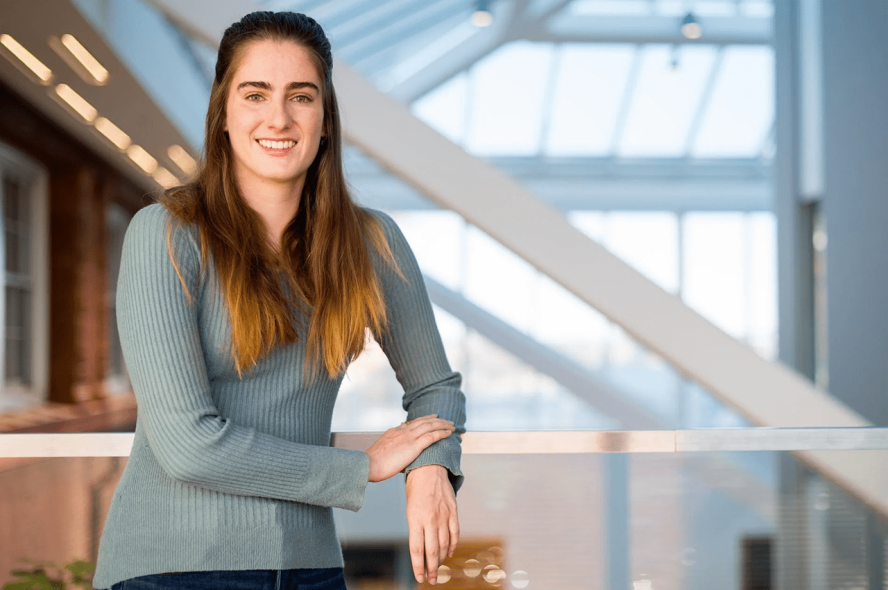Where engineering pathways begin: Julia Jenulis, E25

A junior studying civil engineering at Tufts and a Denver native, Julia Jenulis, E25, is focused on sustainable practices and architecture with the goal of designing resilient buildings to reduce urban impacts on climate change. Her activities outside the classroom include a geotechnical engineering internship with GEI Consultants, an internship with Northeast Clean Energy Council, and the Harvard Graduate School of Design summer Design Discovery studio course. She has also served as a research assistant to Justin Hollander, professor of Urban and Environmental Policy and Planning, working on projects that included looking at how pedestrians interact with the built environment, and will begin working with Farshid Vahedifard, professor of civil and environmental engineering, this spring.
“Originally, I thought environmental engineering was the route I wanted to follow, but then the more structural aspect of civil engineering started to appeal to me, with its focus on designing built solutions instead of gathering data to identify problems. I saw it as a spectrum, with architecture, or individual buildings, representing the smaller scale of my interests, and urban planning as the largest scale that I could work within. Civil engineering falls somewhere in between the two, where you get to work on different-sized systems and have a direct impact on people’s lives.
“One influential course for me was a design-focused class, Engineering for a Sustainable and Resilient Society, taught by Professor [Andrew] Ramsburg [associate professor and associate chair of civil and environmental engineering]. It was an intense class, but it addressed so many of the different things that I'm interested in.
“Our first project was to present a solution to increase resiliency against sea level rise and storm surges in Scituate, Massachusetts. We had to look at 50- and 100-year time frames and describe what the worst-case scenario would be. We had to ask ourselves: If we build a house on a particular plot, how do we make it resilient to water? How do we raise it off the ground and choose the right foundation?
“Another project was based on another [Massachusetts] coastal community, Winthrop, and there we looked at what sort of seawall and natural land combinations would avoid flooding and make sure that people still had access to a bridge. That course anchored civil engineering for me. It gave me the skills that I want to keep using and I've really learned a lot more about the meaning of sustainability. It’s more than climate readiness; it also has to do with social equity.
“I also want to recognize Professor Laurie Baise [chair of civil and environmental engineering], my advisor. I've met with her consistently throughout the past four years and she has always been really supportive. It’s wonderful to be encouraged by a woman faculty member; in an industry that is so predominantly male it inspires me to take the lead and help others.
“I think civil engineering has so much to offer. Sophomore year, my friends and I came up with a definition of civil engineering in an effort to describe it to other underclassmen and encourage their interest. What we came up with focused on the civil part of civil engineering, by which we mean the field’s public impact. Yes, we build bridges and buildings, but our role goes further. We’re looking at roads and utilities and public health and resiliency and climate change—it can take you in a lot of directions. Civil engineering directly impacts large communities every day.
“That’s why civil engineering excites me, especially when I combine it with sustainability. It feels like the best way for me to be someone who can design and inform the change the future needs.”
Read more student profiles in Where Engineering Pathways Begin by Laura Ferguson/Tufts Now.
Department:
Civil and Environmental Engineering